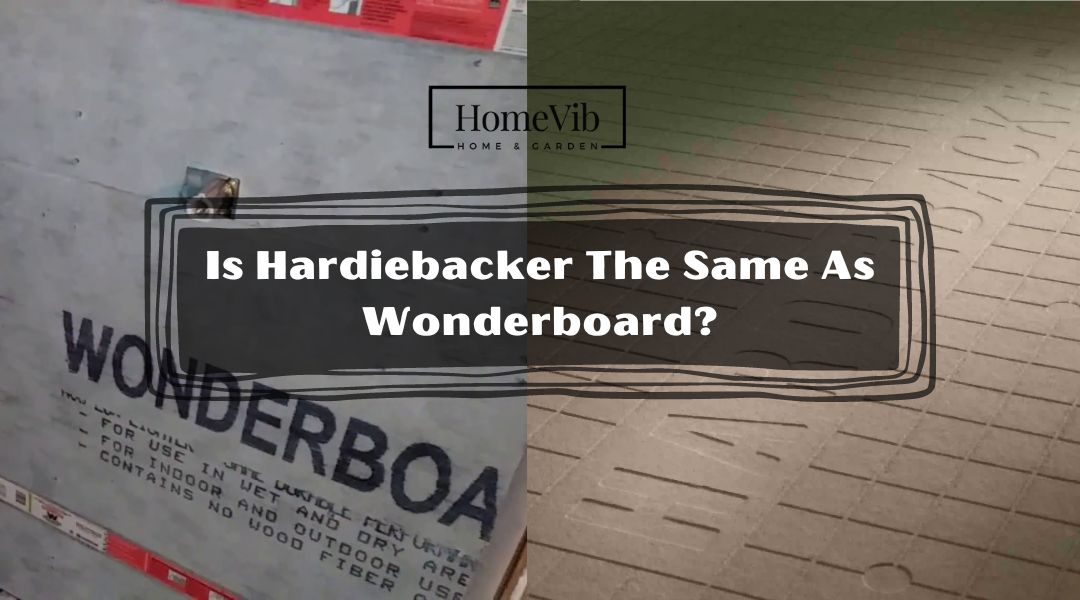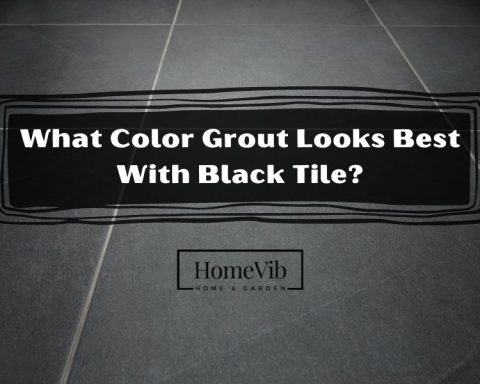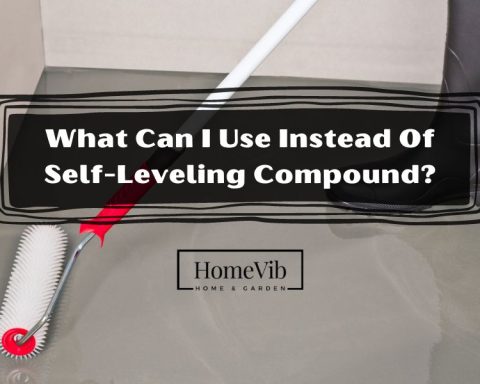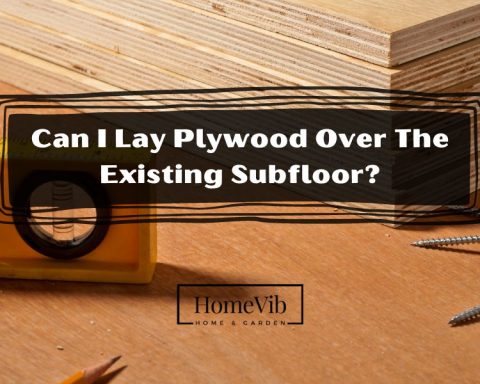If you are searching for Hardiebacker & Wonderboard products, you’re in the right place. Both these products have many similarities. Each has enabled these brands to become very popular in the construction market. But some subtle differences make each product uniquely different from the others.
Here, I’ll explain each product’s features and characteristics. At the same time, we will discuss the advantages and disadvantages. We aim to give you an idea of what’s best for your particular needs.
Comparatively, hardiebacker and wonderboard consist of cement properties. They only differ on the level and percentage that contains it. Wonderboard consists of cement and silica. In contrast, Hardiebacker includes a mixture of cement and cellulose fibers. Both have meaningful usage on floors, walls, and ceilings. At the same time, you can apply it to professional construction and DIY home renovations.
Is Hardiebacker The Same As Wonderboard?
Residential & commercial projects use cement backers to build a solid tiling foundation. There won’t be any squirming or tripping over an imperfect wall or floor because it’s flat and level.
Showers, kitchens, and bathrooms can all benefit from having a cement backer. This is because it is impervious to mold, rot, and moisture damage.
Now, the question is: how can you single out Hardiebacker from Wanderboard? First, let’s take a look at them individually.
What Is Hardiebacker?
Hardiebacker board is an underlayment material for tiles. You can install it in bathrooms, kitchens, and other areas.
It is ideal for underlayment for tile, vinyl, and hardwood floors and as a tile backer board. It consists of the properties like cement board, typically 0.42 inches thick. And contains 90% Portland cement and cellulose fibers.
Hardiebacker is also resistant to moisture damage and has excellent tile adhesion. These boards will make your tiling task more accessible and give you a solid foundation for your work.
However, the backer comes in sections and consists of cement, making it quite hefty.
Before attempting to apply the board, it is essential to determine how much weight it will bear. You should obtain assistance if you need help with how to do it.
What is Wonderboard?
WonderBoard is a fiber cement backer board that you lay down before tiling the floor or walls.
It’s installed similarly to drywall but is heavier and difficult to cut. In addition, it calls for specialized fasteners, taped using mortar, not joint compound.
It consists of portland cement, fiberglass, and EPS (expanded polystyrene). At the same time, it also contains aggregates like silica and beads. This cement backer board is 20% less weight than fiberglass mesh. You can use it for installing tile, stone, slate, and thin brick at home or in the workplace.
Though WonderBoard can resist damp environments, it doesn’t prevent water from seeping through. Therefore, you should staple a moisture-proof material before mounting it to control moisture.
Generally, hardiebacker & wonderboard are both cement in properties and underlayment material for tiles.
Whether for the kitchen, the bathroom, or another room entirely, you may find a use for any cement. Both are also immune to the destructive effects of moisture.
However, their constituent parts are different. For example, Hardie backer has properties of cement and cellulose fibers. On the other hand, aggregates like silica and beads consist of a wonderboard.
In terms of weight, the hardiebacker is significantly lighter than the wonderboard.
6 Similarities And Differences Between Hardiebacker And Wonderboard
1. Composition

Portland cement and sand make up 90% of Hardiebacker. However, cellulose fiber and other additives make up the remaining 10%.
The cement board does not include asbestos, gypsum, or glass fiber. As well as any additional formaldehyde in its composition.
On the other hand, WonderBoard consists of Portland cement aggregates. It contains properties such as silica aggregates and reinforcements.
As you can see, both of these things share characteristics of cement. Cement features a great capacity to resist moisture for an extended period.
To be more specific, a typical piece of cement fiber board will have the following properties:
- 40-60% cement
- 20-30% fillers
- 8-10 %cellulose
- 10-15% mica
Generally, they differ in the quantity and proportion of cement characteristics.
The material known as hardiebacker possesses qualities of cement with cellulose fibers. On the other hand, a wonderboard contains cement, silica aggregates, and reinforcements.
2. Use
Hardiebacker is versatile enough that you can apply it indoors or outdoors. For example, you can apply this cement as a substrate for tiling inside homes and businesses.
Hardiebacker Interior Applications
- Tile and Stone: floors, walls, ceilings, and countertops
- Vinyl and Resilient Flooring: vinyl composition tile (VCT) and other resilient floorings
- Paint and Wallpaper finishes: Drywall
- Steam Room: residential steam rooms
Meanwhile, wonderboard tiling is also fantastic for indoor or outdoor settings. They have excellent flexural strength and resistance to moisture.
Wonderboard Interior Applications
- Residential and commercial tile
- Stone, slate, and thin-brick applications
- Walls, floors, ceilings, counters, and vanities
Generally, both have external and internal uses. Showers, kitchens, and bathrooms can all benefit from having these as a backer. Both methods produce a clean, smooth surface ready for installation.
Overall, there’s not much distinction here regarding application and usage. Both are equally useful for do-it-yourself home improvement jobs and industrial construction initiatives.
3. Price
Install hardieboard siding costs range from $1 to $6 per square foot. So an average-sized home, around 1,500 square feet, will cost between $1,500 and $9,000.
Meanwhile, the average cost per square foot of the wonderboard substrates is $1.06. So, to estimate for installation, it goes to $4.33 per sq. ft. combined with the labor charges.
However, the final cost will rely on factors such as your location and the scope of the work. Other factors are the existing conditions and the type of finish you want.
Hardieboard is hard to source, unlike vinyl or wood, which are easier to get by. In addition, it consists of fiber cement, which is more expensive.
Therefore, the price of a wonderboard is typically lower than that of a hardiebacker. This makes it the more economical choice for large-scale projects. For example, it is beneficial if you have to tile an entire home’s floor.
4. Water Resistance
When it comes to water, Hardiebacker is water-resistant but not waterproof. It serves as a waterproof underlayment for both brand-new construction and remodels. Furthermore, it can withstand high winds and storms, which is why homeowners choose it.
Likewise, you can use Wonderboard in damp environments due to its water-resistant construction. Thus, you’ll see more wonderboards in bathrooms, tubs, and showers. However, wonderBoard is not waterproof, just like a hardiebacker.
As you can see, they are both cement qualities. Thus it seems reasonable to call them water-resistant. So yes, Hardiebacker and Wonderboard siding do an excellent job of wicking moisture. But when you lay it flat on the ground, it will still absorb water.
You can use waterproof substances for both types to make them watertight.
5. Installation
Some homeowners find it simple to install a hardiebacker. Some use it for a few bathroom remodels since it is easier to work with.
Even after extensive drilling and sawing, it remains intact. It doesn’t crumble like a wonderboard. In addition, doors in remodeling situations benefit from the slimmer design.
Meanwhile, the wonderboard may be easily sliced into narrow strips for installation. Yet be careful not to snap off too many pieces at once. Instead, you can use a diamond or carbide blade to score the surface and snap the mesh reinforcement.
Undoubtedly, due to its low weight and ease of cutting, Hardiebacker is a prevalent choice. The recessed pattern and absence of mesh board make installation a breeze.
When comparing the two, wonderboard creates more of a serious injury risk. It can also lead to unsafe working conditions.
The weight, sharpness, and fragility of the wonderboard are all detractors. Hardiebacker makes installing easier than just using a snap knife.
Wonderboard Installation Video
Hardiebacker Installation Video
6. Properties
The features of the hardiebacker were as untidy as a cloud of dust. As a result, it usually spreads to the fabric and the environment.
The government-mandated label extends awareness that exposure by inhalation causes cancer risk.
Similar to hardiebacker, wonderboard products release silica dust. When cut, drilled, or abraded, this dust can cause cancer or delayed lung harm (silicosis) if inhaled.
Indeed, both products likely contain carcinogenic substances.
When applying this product, it’s best to do your work outside, in a well-ventilated room. Moreover, be with some mechanical ventilation. In addition, you should protect your eyes and lungs by wearing a dust mask and safety goggles.
Hardiebacker Advantages and Disadvantages
Advantages
- Fireproof and Waterproof
- Sturdy and durable
- It has a long service life
- Fiber cement provides excellent durability
- Resistant to strong impacts
- Looks great in various colors and designs.
- A 30-year, transferable, non-prorated guarantee
- Protects against termites and carpenter ants
- Proficient Setup
- Easily handled; lightweight
Disadvantages
- It may take more time and effort to install than with other materials
- It may require a larger budget, more skilled workers
- Great financial investment
- Upkeep of fiber cement is quite a labor-intensive
- Careful planning and ventilation are necessary
Wonderboard Advantages and Disadvantages
Advantages
- Waterproof and resistant to fire
- Antimicrobial resistance
- Lightweight, non-combustible
- It’s easy to set up and requires no pre-cut openings in the studs
- Contains no honeycomb or other forms of structural weakness
- Ability to make a board to fit any space
- Resilience in the face of moisture and installation damage
Disadvantages
- Needs regular upkeep
- The core isn’t waterproof, but it can withstand getting wet without falling apart.
- Not the most environmentally friendly
- Heavy and challenging to install
- Bridge for energy loss
- Difficult to cut and can leave an abrasive sandy crumb
- Can corrode shower walls and bathtubs
What Is Better Hardibacker Or Wonderboard?
Hardiebacker and Wonderboard have pros and cons. Yet a definitive answer to this question would require more context.
For example: if we are talking about a small residential bathroom. Or the kitchen in a six-bedroom ranch. It could be the case that you may need a hardiebacker since it’s easier to cut and install. But take note of the costs that come with it. Even though the hardiebacker is lighter, it is just as strong as a wonderboard.
If you’re up for large DIY projects, wonderboard is the superior product. As a result, it is less expensive. It is also a more practical choice for massive residential projects. However, using this product may cause complex installation.
Wonderboard is a good option if you’re trying to save money. On the other hand, choose a hardiebacker if you need something simple to install but is on the pricier side.
Ultimately, the decision between these two products depends on the task. Both products are helpful for homeowners, but only one can function optimally for a given job. Both are useful for DIY home improvement projects and commercial building projects.









